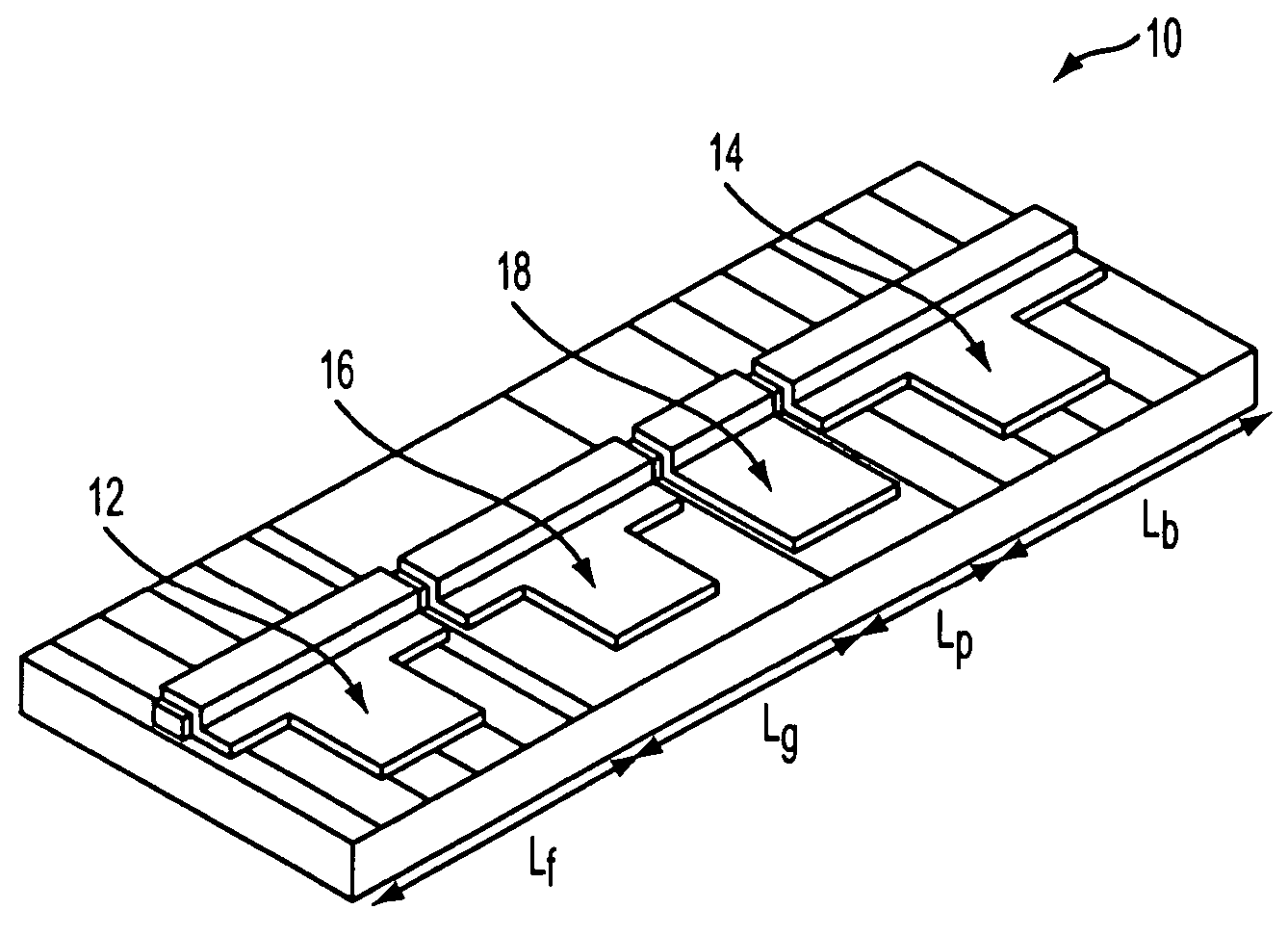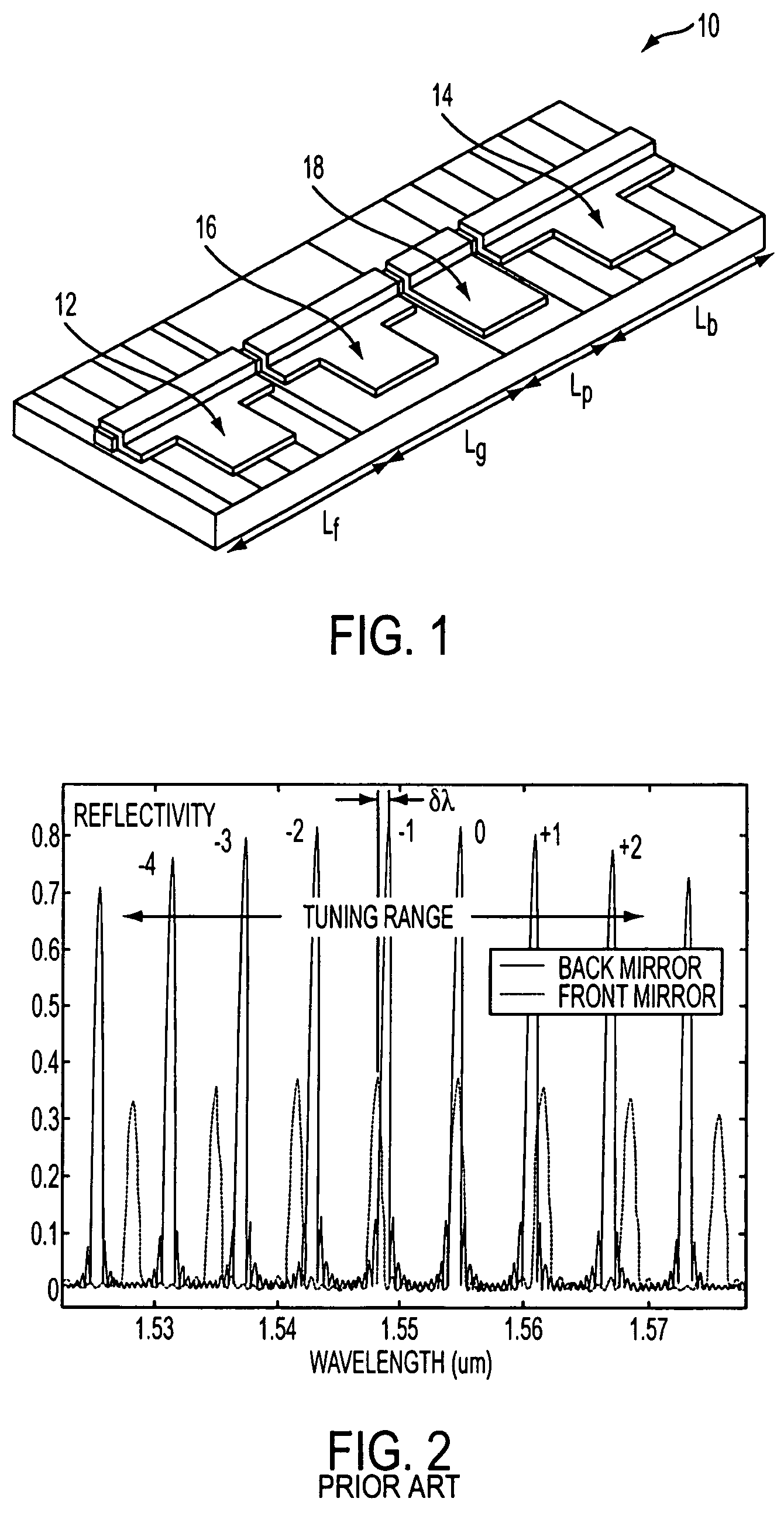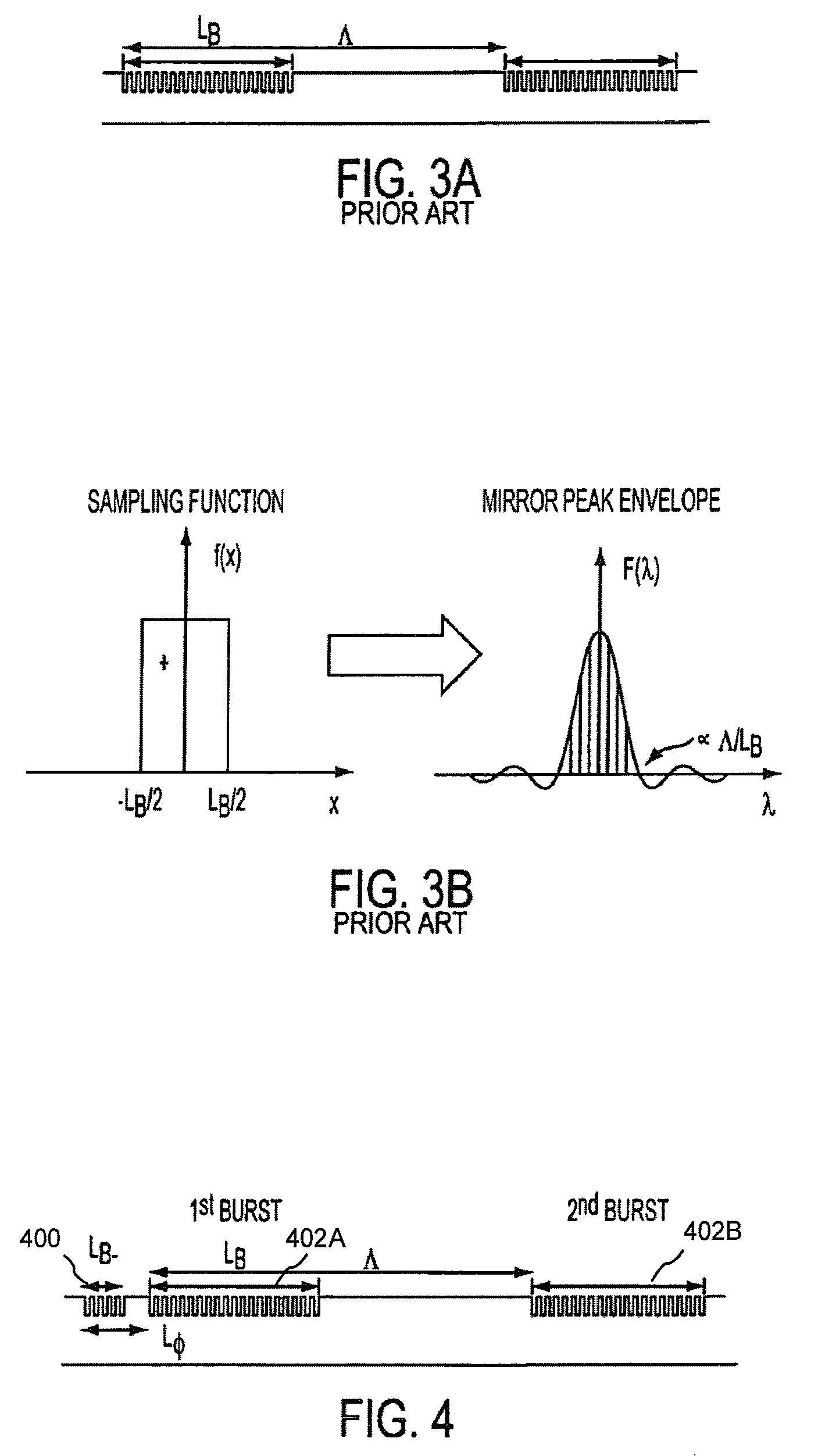Manufacturable sampled grating mirrors
a technology of grating mirrors and sampled grating, which is applied in the direction of lasers, semiconductor lasers, optical resonator shapes and construction, etc., can solve the problems of compromising output power, unable to meet the potential of light-based systems, and designs that can provide over 40 nm tuning range have not been able to provide much more than a couple of milliwatts of power, etc., to achieve wide tuning, simple manufacturing, and large wavelength span
- Summary
- Abstract
- Description
- Claims
- Application Information
AI Technical Summary
Benefits of technology
Problems solved by technology
Method used
Image
Examples
Embodiment Construction
[0046]In the following description, reference is made to the accompanying drawings which form a part hereof, and in which is shown, by way of illustration, an embodiment of the present invention. It is understood that other embodiments may be utilized and structural changes may be made without departing from the scope of the present invention.
[0047]FIG. 2 depicts a widely-tunable, four-section SG-DBR laser 10 that makes use of two multi-peaked DBR mirrors 12,14, which are formed and configured in accordance with the present invention, to achieve an extended tuning range. Currents are applied to the various electrodes to provide a desired output optical power and wavelength as discussed in U.S. Pat. No. 4,896,325. As described therein, a current to the gain section 16 creates light and provides gain to overcome losses in the laser cavity, currents to the two differing SG-DBR wavelength-selective mirrors 12,14 are used to tune a net low-loss window across a wide wavelength range to se...
PUM
 Login to View More
Login to View More Abstract
Description
Claims
Application Information
 Login to View More
Login to View More - R&D
- Intellectual Property
- Life Sciences
- Materials
- Tech Scout
- Unparalleled Data Quality
- Higher Quality Content
- 60% Fewer Hallucinations
Browse by: Latest US Patents, China's latest patents, Technical Efficacy Thesaurus, Application Domain, Technology Topic, Popular Technical Reports.
© 2025 PatSnap. All rights reserved.Legal|Privacy policy|Modern Slavery Act Transparency Statement|Sitemap|About US| Contact US: help@patsnap.com



